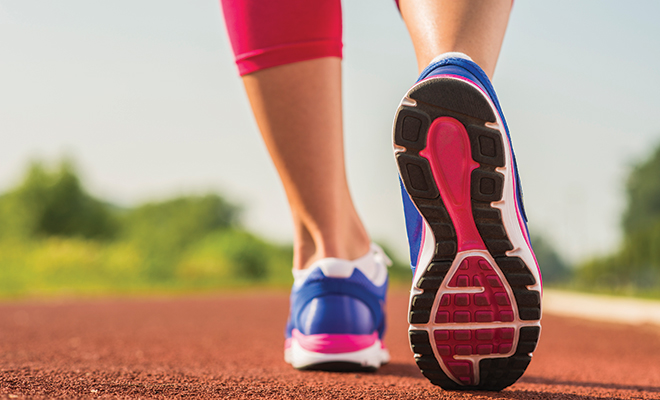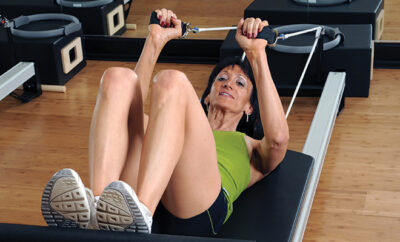
Walk This Way! The Exercise for EVERYbody
Working “out” gets a whole new meaning when you are lucky enough to exercise outdoors. Most of us know the potential health benefits of walking—lowering blood pressure, increasing lung capacity, strengthening the body and cutting risk of heart disease. In addition, when combined with a healthy diet, walking helps keep our weight under control, gives us added energy and can lift our spirits like nothing else!
Walking is natural for most of us, but if it has been a while since your last substantial stroll, you could risk more than a blister if you don’t stride right.
Proper Form
First, think about striking the foot heel to toe. Striking the heel first allows your ankle to move through its full range of motion. Step forward, landing about midway on the heel. Roll the foot forward to the ball of the foot, and as you exit, think about raising the heel and pushing off the big toe.
Next, concentrate on walking proud! Lift your chest high and relax your shoulders down away from the ears. Hold your belly muscles back toward your spine and let your arms fall in a comfortable position next to your body. With a slight bend of the elbows, drive the arms back slightly and keep your head in a neutral position. Cup the hands softly and keep from making a tight fist, as this only adds stress to the shoulders and arms.
Speed
How many times have you witnessed walkers talking on a cell phone? If you are conversing while you are walking, you should either be perusing the mall or your own backyard. It isn’t safe to walk and talk on the phone. You can’t pay attention to your surroundings, and you certainly aren’t walking at a pace that will make a difference in your results. Keep the phone handy for an emergency, but aim to stay off the horn when you are en route.
Exertion
Along with speed, exertion plays a major role in the results you see from walking. If you’re new to walking for exercise, graduate slowly by adding hills and longer walks into your program. Try intervals for even faster results. In a Danish study, interval walkers lost six times more weight than walkers who maintained a steady pace.
Try this: Walk for one minute as fast as you can and then walk another minute-slow and recovering. Repeat 10 times for a 20-minute interval.
Hills are another way to add challenge. Inclines can be a great way to burn calories. For each degree of incline, you can expect to burn 10 percent more calories than walking on a flat surface.
Shoes and Such
Good footwear is key to a winning walk. Choose shoes with proper arch support, a firm heel and thick flexible soles to cushion your feet and absorb shock. Test out your possible pair by walking around the store before you buy.
For your walking wardrobe, aim for comfortable clothing and dress in layers according to the weather. If you are on foot in the evening, wear reflective tape or bright colors so drivers can see you. Stick to walking on paths or sidewalks after dusk.
Track Your Progress
To help keep you motivated and provide inspiration to stay on track, try keeping a record of how many steps you take, how many miles you walk or how many calories you burn. Walking phone apps are great for tracing your progress.
Safety Tips
Stretch after your walk. Proper stretching helps lesson the chance of injury while making us feel better the next day.
Plan for the weather and stay hydrated. Always carry identification or wear an I.D. bracelet. Listen to your body. If you need a rest day or two, take it!
Stay Motivated
As with any workout program, changing the routine periodically keeps boredom at bay and helps overcome plateaus. Add a new walking route, or drive to a destination to take a totally different trek. Invite a friend to walk with you or try the treadmill on a rainy day; just imagine you are walking in a favorite vacation spot. Above all, don’t quit. Even with sidetracks such as bad weather, vacation or sickness, commit to walking even if you have lapsed for a bit.
Goals may come and go, but our wellbeing is here to stay. Get on the right track by lacing up those shoes and stepping out toward a healthier summer! ■
Sources: acefitness.org, myfitnesspal.com and heart.org.
Smart Goals
To stay on track and motivated, set S.M.A.R.T goals for yourself.
Specific: Make sure your goal is not too general.
Measurable: How many miles? How much speed?
Attainable: A smart goal should be achievable.
Relevant: Your goals should align with your long-
term objective.
Timely: A smart goal should have a target date. ■







